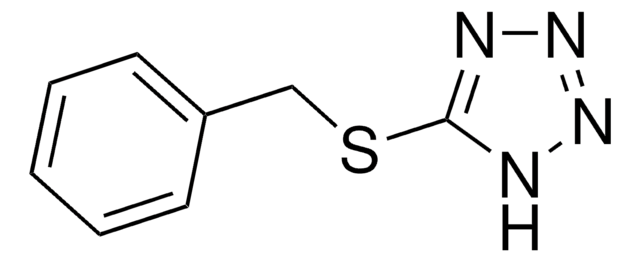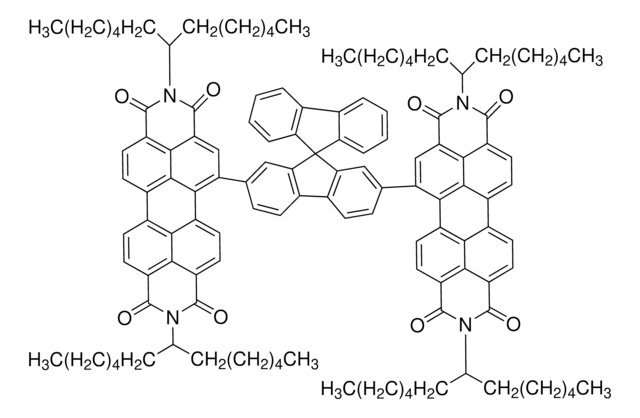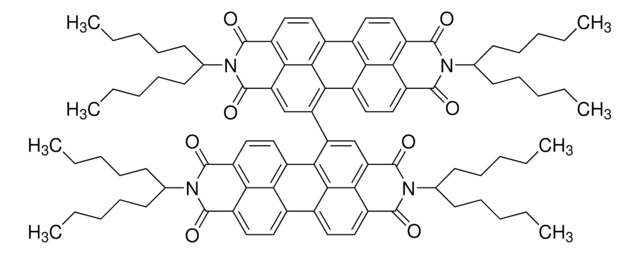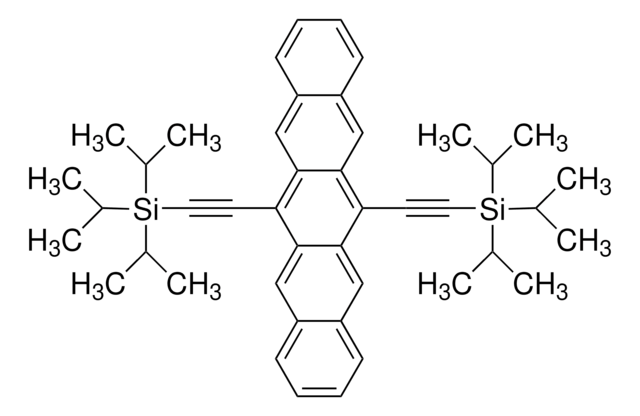910988
Allyl germanane
Synonym(s):
Allyl-terminated germanane
Sign Into View Organizational & Contract Pricing
All Photos(1)
About This Item
Empirical Formula (Hill Notation):
C3H5Ge
Molecular Weight:
113.71
UNSPSC Code:
12352101
NACRES:
NA.23
Recommended Products
form
powder
Related Categories
Application
Germanane is novel 2D graphene analog material. However, in sharp contrast to graphene it exhibits semiconducting properties with direct band gap of 1.50 eV. Germanane exhibits high electron mobility and its alkylation allows band gap tuning from 1.50 eV for allyl to 1.62 for methyl germanane. The semiconducting properties of alkylated germanane make them suitable for application is photocatalysis, optoelectronic, sensing etc.
Storage Class Code
11 - Combustible Solids
WGK
WGK 3
Regulatory Information
新产品
Choose from one of the most recent versions:
Certificates of Analysis (COA)
Lot/Batch Number
Don't see the Right Version?
If you require a particular version, you can look up a specific certificate by the Lot or Batch number.
Already Own This Product?
Find documentation for the products that you have recently purchased in the Document Library.
Synthesis of 1T, 2H, and 6R Germanane Polytypes.
Cultrara N D et al.
Chemistry of Materials, 30, 1335-1343 (2018)
Tailoring the Electronic Structure of Covalently Functionalized Germanane via the Interplay of Ligand Strain and Electronegativity.
Jiang S, et al.
Chemistry of Materials, 28, 8071-8071 (2016)
Electronic properties of germanane field-effect transistors.
Madhushankar B N, et al.
2d materials, 4, 021009-021009 (2017)
Zhenhua Liu et al.
Chemical communications (Cambridge, England), 50(75), 11046-11048 (2014-08-08)
A novel 2D material germanane (GeH), which was synthesized by an ion-exchange approach, was firstly found to exhibit photocatalytic performance in the hydrogen evolution of water splitting and decomposition of organic contaminants under illumination of visible light (λ ≥ 420
Andrew C Serino et al.
ACS nano, 11(8), 7995-8001 (2017-08-02)
The high theoretical energy density of alloyed lithium and germanium (Li15Ge4), 1384 mAh/g, makes germanium a promising anode material for lithium-ion batteries. However, common alloy anode architectures suffer from long-term instability upon repetitive charge-discharge cycles that arise from stress-induced degradation
Our team of scientists has experience in all areas of research including Life Science, Material Science, Chemical Synthesis, Chromatography, Analytical and many others.
Contact Technical Service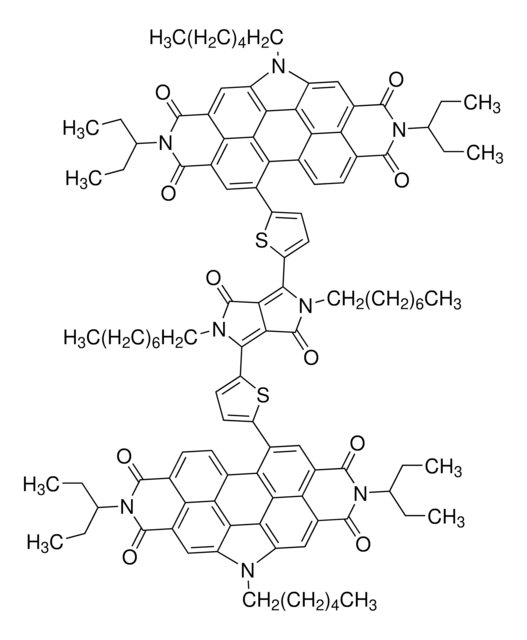


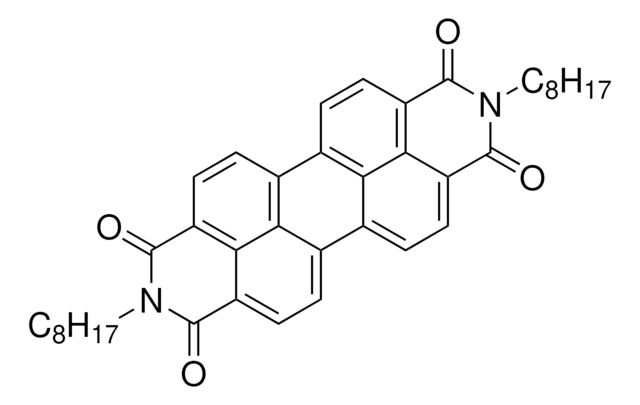
![N,N′-Bis[2-(2-tert-butyldimethylsilyloxyethoxy)ethyl]-3,4,9,10-perylenetetracarboxylic diimide 97%](/deepweb/assets/sigmaaldrich/product/structures/334/047/4ac691aa-ae25-4df1-9e0d-09ed12cb8f1f/640/4ac691aa-ae25-4df1-9e0d-09ed12cb8f1f.png)
